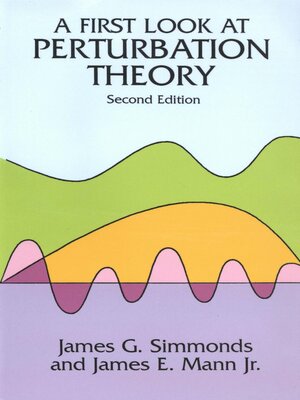
Sign up to save your library
With an OverDrive account, you can save your favorite libraries for at-a-glance information about availability. Find out more about OverDrive accounts.
Find this title in Libby, the library reading app by OverDrive.



Search for a digital library with this title
Title found at these libraries:
| Library Name | Distance |
|---|---|
| Loading... |
Undergraduates in engineering and the physical sciences receive a thorough introduction to perturbation theory in this useful and accessible text. Students discover methods for obtaining an approximate solution of a mathematical problem by exploiting the presence of a small, dimensionless parameter — the smaller the parameter, the more accurate the approximate solution. Knowledge of perturbation theory offers a twofold benefit: approximate solutions often reveal the exact solution's essential dependence on specified parameters; also, some problems resistant to numerical solutions may yield to perturbation methods. In fact, numerical and perturbation methods can be combined in a complementary way. The text opens with a well-defined treatment of finding the roots of polynomials whose coefficients contain a small parameter. Proceeding to differential equations, the authors explain many techniques for handling perturbations that reorder the equations or involve an unbounded independent variable. Two disparate practical problems that can be solved efficiently with perturbation methods conclude the volume. Written in an informal style that moves from specific examples to general principles, this elementary text emphasizes the "why" along with the "how"; prerequisites include a knowledge of one-variable calculus and ordinary differential equations. This newly revised second edition features an additional appendix concerning the approximate evaluation of integrals.







